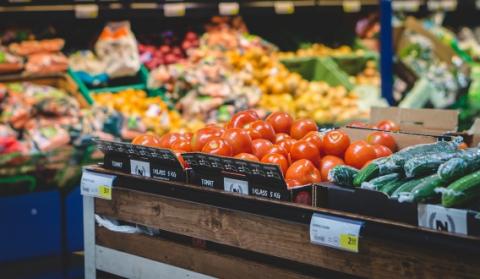Save 27% on Your Grocery Bill

Given the current economic state, the focus for most people right now is trying to be smart with their money and getting the most from their dollar. The recent rise in food prices makes it especially hard to stretch that food dollar. This may be one of the reasons leading to unhealthy eating habits for many people. Making sure to include healthy food in your diet is very important and there are strategies that you can use to make it more affordable.
After speaking with a group of women who share this common problem we learned several ways to get around high food prices and purchase foods that are good for you and your family.
Purchasing store-brand rather than brand-name items whenever possible will save you more than any other single strategy. For example, if brand-name tomato sauce is priced at 47¢ for 1/2 cup and store brand sells for 38¢ per 1/2 cup, a spaghetti dinner for a family of four will save about 40¢ on tomato sauce if you buy the store brand.
Get organized and make a list before shopping - This will prevent you from buying food you don't need.
Bring flyers and coupons shopping with you - That way you'll know what specific products and brands are on sale. Don't redeem brand-name coupons unless they offer the product for less than the store brand.
Never shop hungry (or with hungry children) - This means your stomach will be doing the shopping for you (and we all know when you're really hungry you could eat anything off those shelves).
Plan ahead - Make a list of meals you'll be having during the week, and figure out what ingredients you need to buy.
Buy unprocessed foods - Commercial processing and packaging adds to the cost of the food. Why not buy the ingredients and make your own? For example, buy a carton of rolled oats and make your own breakfast cereal instead of eating packaged dry cereals. Wash and chop your own lettuce instead of choosing pre-washed, precut salad greens. Learn to make soup, biscuits, bread, gravy, frosting, stuffings, and snacks.
Purchase produce in season - Fruits or vegetables in season tend to be lower in price because of the increased availability. In winter, choose long-storage products: bagged apples, cabbage, winter squash, and root vegetables such as turnips, potatoes and beets.
Don't forget the other forms of fruits and vegetables - Canned, dried, and frozen all contain nutrients we need to stay healthy, so stay open-mined.
Look high and low for bargains - Stores put higher-priced, brand-name items at eye level so shoppers see them first. The less-expensive store-brand items provide the same nutritional value and deliver greater savings.